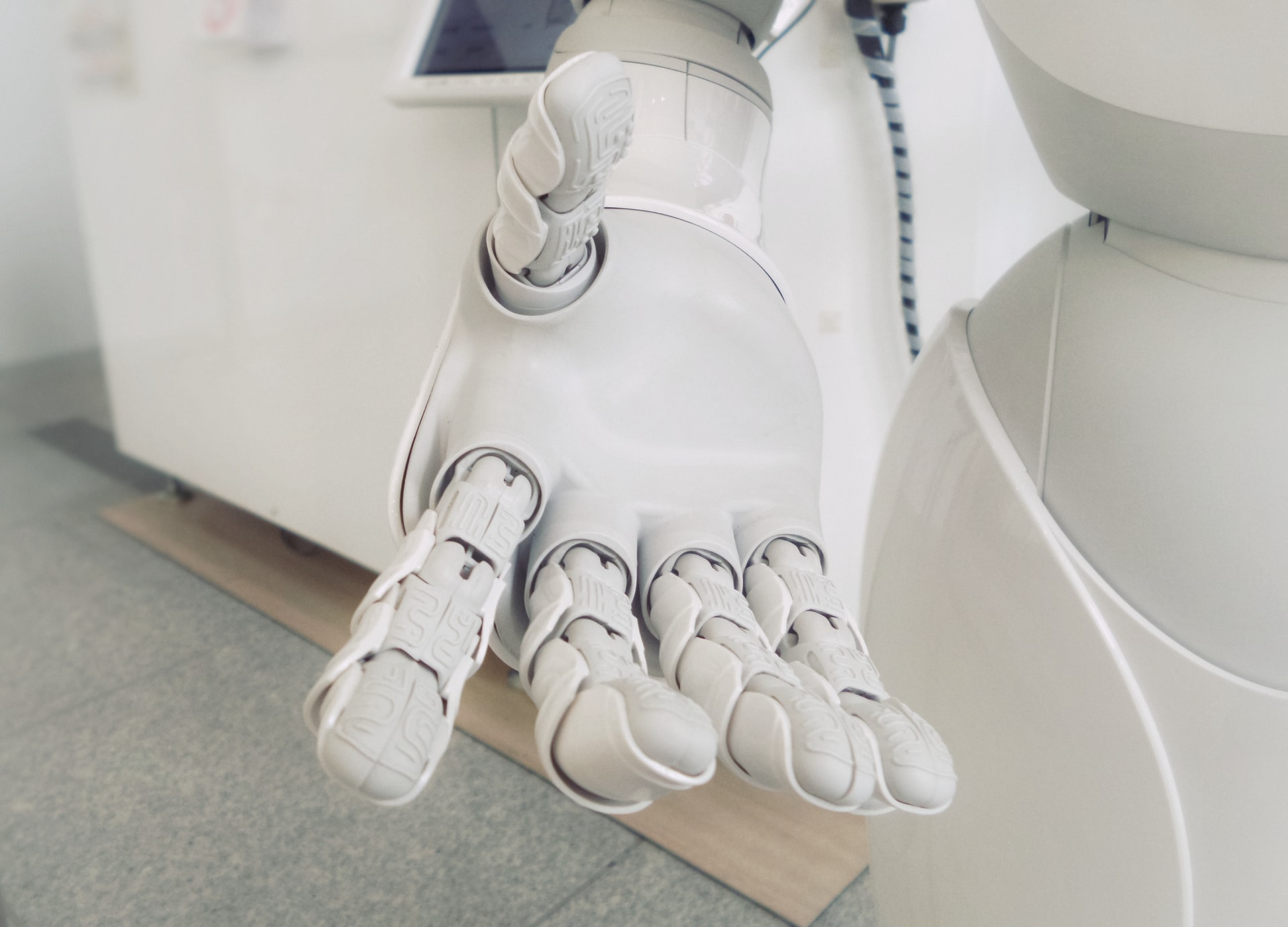There aren’t enough workers!
by William Meisel
Computer technology—Artificial Intelligence in particular—is often viewed as a threat to take over so many jobs that used to require humans that humans become “superfluous,” as one expert put it. The reality today is a worker shortage, not a job shortage. As the number of working-age individuals relative to the population shrinks, we need computers to do more jobs to maintain economic growth.
The real economic threat is that the lower working-age fraction of the population can’t contribute enough taxes to maintain government expenditures, including Social Security. The shortage of workers is partly due to demographic trends; the number of working-age humans will be a decreasing fraction of the population as we live longer and birth rates slow or decline. We must find a way to in effect tax the computers doing the jobs.
Computers have long contributed to economic efficiency by automating some tasks that previously required humans. Accounting, for example, is a much different job than it was before computers took over most of the detailed calculations. Computers have long been better than us at arithmetic and remembering and searching large amounts of information, changing jobs involving those tasks.
The fraction of the population of most developed countries over retirement age will continue to grow. It will become increasingly difficult to tax workers sufficiently to support governments and the social safety nets they provide. Governments can’t simply increase taxes on individuals—even wealthy individuals—as a long-term solution to this imbalance.
In the recent past, many individuals in the U.S. benefited from strong stock market performance to build up their assets for and during retirement. This benefit is moderating, if not reversing. A steadily rising stock market can’t be counted on as a pillar of economic philosophy.
Rather than a danger to society, computers and robots will be required to support humanity by doing an increasing part of the work necessary to support an economy. Fortunately, steadily increasing computer power can support increased automation both through pure processing power and through the technologies such as AI that growing computing power makes possible. The challenge is how to make that increasing fraction of work done by machines support a growing number of retired individuals and government activities in general. How do we in effect make computers pay taxes as they become an increasing part of the workforce?
Let’s first examine workforce trends. The fear of automation taking jobs is not new; technology has always eliminated some jobs and created others; this “creative destruction,” as Joseph Schumpeter put it, has largely been balanced between creation and destruction of jobs. Recessions are created by economic cycles or externalities such as pandemics, not the progress of technology.
The U.S. today, despite exponentially growing computer power, is challenged more by a shortage of workers than a shortage of jobs. As the pandemic receded, U.S. employers added 431,000 jobs in March 2022 and 428,000 in April, according to the Labor Department. The unemployment rate dropped to 3.6% in both months, just slightly above the half-century lows it had reached before the pandemic. U.S. employers posted a record 11.5 million job openings in March 2022.
Mature economies face an impending shortage of workers relative to a growing population of non-workers. In 2019, about 16.5% of the U.S. population was 65 years old or over; in 1950, only eight percent of the population was 65 or over. The fraction over 65 is expected to reach 22% by 2050. In the U.S. in early 2022, people 55 and over that the pandemic had denied work were returning to work at much lower rates than younger workers.
Japan is an example of a country on the threshold of a crisis caused by this population trend. The fraction of the population aged 65 years and above in Japan in 2020 was approximately 28%.
China’s rapidly aging society and plunging birth rate create long-term economic issues, challenging its pension system. The government now encourages women having more children, even allowing tax deductions for childcare expenses.
This population trend internationally is continuing due to stable or declining birth rates and increasing life expectancy. While life expectancy trends may be partially offset by disasters such as the COVID pandemic, we hopefully can’t count on such disasters to do more than slow the trend toward individuals’ living longer.
According to the World Bank, life expectancy increased from 69.8 years in 1969 to 81.2 years in 2019—more than 11 years in half a century. In the twentieth century, we have almost doubled life expectancy from forty to seventy. There have been interruptions in this trend during the COVID pandemic, but Yuval Harari in his 2017 book, Homo Deus: A Brief History of Tomorrow, predicted that in the twenty-first century we should at least be able to double it again to 150!
In 2022, specific drugs that address the effects of aging were being tested on animals. Leading candidates for reducing the effects of aging include metformin, a diabetes treatment, and rapamycin, used to prevent transplant patients from rejecting donated organs. Both have been shown to increase longevity in animal studies and both target molecular processes linked to the aging of cells.
Another approach is a new class of drugs called senolytics, which clear the body of so-called senescent cells, old cells that stop dividing but don’t die. Senescent cells accumulate in tissues throughout the body and secrete factors that damage other cells. They are linked to such aging conditions as frailty, cognitive impairment, and lack of physical resilience.
Scientists are also studying a technique called cellular reprogramming which restores functions characteristic of younger cells. It is not inconceivable that we will learn what causes the negative effects of aging and, with genetic engineering, cure that “fault”; perhaps we will then die only through disease, accident, or violence!
Skeptics would say that such potential medical advances are irrelevant, warning that we are doomed to wipe out much of humanity through human failures such as ignoring global warming or a nuclear war. Such issues are independent challenges; we can’t simply assume that possible catastrophes will make an aging population irrelevant and just ignore that already visible trend.
A compounding problem is that birth rates are declining, with fewer younger people available to support the aging. According to government agencies, the U.S. birthrate declined 4% in 2020, the sixth straight year of decline. China’s population growth has fallen from around ten million a year to around zero.
A Pew Research Center survey in late 2021 found that a rising share of U.S. adults who are not already parents say they are unlikely to ever have children. Some 44% of non-parents ages 18 to 49 said it is not too likely or not at all likely that they will have children someday, an increase of 7 percentage points from the 37% who said the same in a 2018 survey. Further, 74% of adults younger than 50 who are already parents said in the 2021 survey they are unlikely to have more children, virtually unchanged since 2018.
Another trend encouraging automation is a country’s fear of overly depending on other countries for producing native companies’ products or components of their products, semiconductor chips being a current prominent example. This concern is motivating companies to support manufacturing more products in-country, driving a worldwide trend reversing globalization. This major trend may force countries with relatively high wages to accelerate adoption of increased automation so that increased efficiency allows bringing back factory jobs.
Computers and automation, rather than being a threat, are a solution for advanced economies. Computers must do more jobs.
Computers are best at automating very repetitive and simple tasks, the most boring jobs for humans. For example, a speech recognition system providing answers to “Frequently Asked Questions” (FAQs) on a customer service telephone line is replacing a human forced to, in effect, simulate a computer by reading answers to such typical questions. Despite the fact the computer is dealing with human speech in that application, the “AI” involved is otherwise relatively simple. The software must transcribe the customers’ speech to text and see if keywords in the customer inquiry match keywords in a FAQ. If so, it can provide a previously recorded answer or ask a follow-on question to decide which answer containing the keywords is the best fit. If there is no good fit, it can forward the call to an agent who handles more complex inquiries. Agents’ jobs are more interesting, and the value added by their being fewer and dealing only with harder tasks allows better pay. Customers benefit by getting most answers to their questions more quickly than if they had to wait for an agent. Companies benefit by saving money through partially automating customer service. This case is typical of where AI is impacting jobs that previously couldn’t be done by computers.
However, these trends also suggest that governments must generate income other than by taxing workers. Continually raising taxes on the shrinking proportion of the working-age population is not a feasible solution. There may be some room in the short term to increase tax rates on wealthy individuals, in part by closing tax loopholes, but that also has limits.
Automation today is largely computers or computer-controlled machinery doing some of the work that originally required humans. This requires a rethinking of where the money saved by those efficiencies goes and what government tax strategies could reflect that reality. We must find a way to, in effect, “tax” computers.
Computer automation increases profits for companies through increased productivity, producing more products with fewer workers. The increased company profits that automation generates should increase taxes automatically, even without increasing corporate tax rates. However, profits reported by companies are limited artificially by many tax loopholes, and profits can be postponed by capital investments that increase later profits.
Because profit can be easily manipulated or postponed, taxes could be based on sales volume rather than profit. A company could be required to pay a fraction of their sales to the U.S. government, a form of sales tax paid by the company instead of the consumer. Some countries (not the U.S.) already have a “value-added tax,” where companies pay part of a sales tax on products sold. Corporate taxes based on revenues in a given country are one way to tax the increased profits generated for companies by computer automation.
A direct tax on revenues, however, doesn’t directly measure the differences in benefit companies obtain by automation; some industries will benefit more easily from automation than others. In my last couple of books, I suggested an “automation tax” that would increase taxes on companies based on the degree that automation is creating efficiencies within the company. The degree to which a company is taking advantage of computer automation can be usefully measured by looking at the ratio of revenues to the number of workers the company employs. Revenue per worker would seem to be a measure of the efficiency of the company, and efficiency is most often driven by automation. An automation tax could be an incremental tax on companies where revenue per worker exceeded a threshold, with the tax higher for a larger ratio. It would have an additional benefit of making retaining workers a way to reduce taxes, encouraging maintaining jobs. Companies should be willing to pay increased taxes if there is a fair way of determining how much they are benefiting from automation, since otherwise an increasing majority of consumers (particularly retirees) won’t be able to afford their products.
A company’s computer usage could also be taxed more directly. The company could be required to report the electrical power used in a given tax period driving their computer center and the power used indirectly through cloud computing services. A tax related to that power usage could be one way of more directly taxing computers. It would also have the secondary benefit of indirectly encouraging energy efficiency and thus reducing emissions leading to global warming.
Ironically, the fear of some analysts that computers will take over too many jobs, making humans unnecessary (usually citing AI as the villain in this scenario) is misplaced. More accurately, automation, properly managed, is likely to be more of a solution than a problem. An aging population can be supported by directly or indirectly taxing the increased corporate profits generated by automation, a “computer tax.”
A process of taxing computers—with the right parameters—can be a virtuous cycle. The increasing older population creates an increasing customer base, one with more leisure time to spend money and a need for services associated with aging. Increased sales generated by this demand enhances the benefit of automation. The increased profits due to increased sales and profit margins makes it easier to raise taxes from companies.
This article is based in part on Dr. Meisel’s recent book, Evolution Continues: A Human-Computer Partnership,2022.



